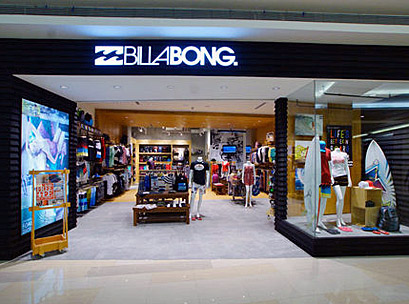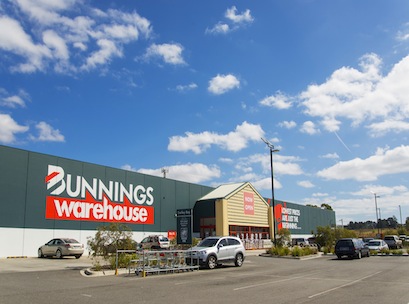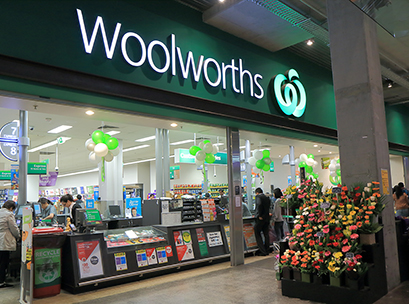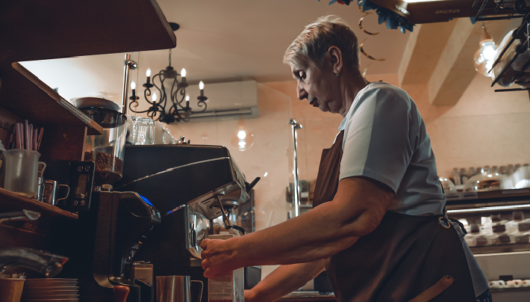 First half sales results from retailers listed on the Australian Stock Exchange confirm continuing difficult retail conditions, prompting even some of the better performers to express caution about future results.
First half sales results from retailers listed on the Australian Stock Exchange confirm continuing difficult retail conditions, prompting even some of the better performers to express caution about future results.
In line with previous updates to investors, the latest results indicate that a number of retailers are struggling for revenue growth and battling the erosion of margins and falling profitability.
The results have underlined the fact that the leading retail brands are still generating growth but three major retailers that have been in losing market share, sales and earnings in recent years remain in perilous waters.
The retailers in most difficulty are the two discount department store chains, Big W and Target who continue to bleed sales and earnings, despite turnaround programs and Billabong International.
The results announced by retailers indicate Super Retail Group, Kathmandu and Specialty Fashion Group have made significant progress in addressing internal issues in the past six months.
Retail heavyweights Myer, Harvey Norman and Premier Retail have yet to release their first half results, but financial analysts are expecting revenue gains for all three retailers.
Premier Retail has already flagged a lift in first half sales to $588.6 million courtesy of the expansion of the Smiggle stationery chain and pyjama retailer Peter Alexander.
Premier has forecast a pre-tax earnings lift of around 10 per cent to around $92 million despite continuing sluggish sales in its women’s clothing chains.
Specialty Fashion Group has also provided an update on its first half performance, indicating pretax earnings should be around $30 million, an 11 per cent increase on the same period in 2016.
Specialty Fashion Group has apparently reined in losses in the Rivers chain that it acquired and is currently assessing a $135 million takeover offer from the Qatar-based investment company Al Alfia Holdings WLL.
Ironically, one of the strongest results for the half year came from Domino’s Pizza Enterprises which posted a 21.1 per cent increase in group revenue to $539.4 million and a 30.8 per cent lift in net earnings to $59.7 million.
Domino’s trades in Australia, New Zealand, Japan, Germany, Belgium, France and the Netherlands.
The pizza chain’s Australia and New Zealand sales were up 17.2 per cent to $150.1 million and pre-tax earnings climbed 23.9 per cent to $55.2 million, providing some positive news for the retailer after weeks of negative headlines related to the under-payment of employees.
Bunnings stays ahead
 Bunnings turned in another strong half with an 8.3 per cent gain in revenue for its Australia and New Zealand operations including a 6.5 per cent lift in comparable sales.
Bunnings turned in another strong half with an 8.3 per cent gain in revenue for its Australia and New Zealand operations including a 6.5 per cent lift in comparable sales.
Bunnings earnings were up three per cent to $722 million, checked by a loss of $48 million on its Homebase business in the United Kingdom, which is being converted to the Bunnings Warehouse store model.
The UK operations generated sales for the first half of FY2017 of $1.04 billion and Wesfarmers MD, Richard Goyder, said the British chain was making very good progress, despite the losses associated with restructuring and repositioning the business.
JB Hi-Fi’s strong growth
JB Hi-Fi has been the strongest performer of all listed retailers over more than a decade and finalised the acquisition of The Good Guys in November 2016, a move that will lift full financial year sales to more than $6 billion.
The entertainment, technology and appliances retailer lifted sales by 23.6 per cent to $2.6 billion for the six months to 31 December, 2016, capturing some of the sales that previously went to Dick Smith, a month’s sales from The Good Guys and its own store development program.
The company generated like-for-like sales growth of 8.7 per cent in Australia but suffered a comparable sales fall of 11.2 per cent in New Zealand, which JB HiFi told investors is now “an ongoing focus for the management team”.
Both JB Hi-Fi and Bunnings Warehouse management have warned that the respective exits of Dick Smith and Masters Home Improvement from the retail market are unlikely to provide a significant boost going forward in the current half and into FY2018.
Financial analysts have also noted that a slow down residential construction is likely to see the robust sales growth JB Hi-Fi, The Good Guys and Harvey Norman moderate in the months ahead.
However, JB Hi-Fi noted in its release to the ASX that January sales had been solid, with its own brand posting 7.2 per cent growth on a comparable store basis, better the January figure in 2016, while The Good Guys stores like-for-like sales in the month were up 3.5 per cent.
Woollies and Coles go head-to-head
The battle between Woolworths and Coles in the supermarket and liquor categories remains a fierce contest for market share, customer recruitment and retention, sales and profitability.
 Woolworths lifted its supermarket sales in Australia in the first half by 2.8 per cent to $18.713 billion, following a 3.1 per cent gain on a comparable sales basis for the second quarter, up from 0.7 per cent in the first quarter.
Woolworths lifted its supermarket sales in Australia in the first half by 2.8 per cent to $18.713 billion, following a 3.1 per cent gain on a comparable sales basis for the second quarter, up from 0.7 per cent in the first quarter.
Woolworths Endeavour Drinks Group posted a four per cent increase in sales to $4.32 billion for the half, underpinned by the Dan Murphy brand.
While the turnaround strategy for Woolworths succeeded in lifting sales, the revenue gains came at an ongoing cost to the bottom line with pre-tax earnings in the half on the Australian supermarkets down 13.8 per cent to $811.6 million.
The Endeavour Drinks Group lifted its pre-tax earnings for the six months by 3.1 per cent to $302.3 million.
Coles food and an improving liquor division posted revenue growth of 2.3 per cent for the first half of FY2017, taking sales to $16.878 billion.
While Coles’ comparable sales were up just 1.3 per cent and profitability shrank by 2.6 per cent, it was stronger than Woolworths at $920 million.
The two grocery goliaths were relatively pleased with the food and liquor results but the ongoing problems in Woolworths’ Big W and Wesfarmers’ Target discount department store chains continue to defy turnaround plans.
The Big W chain’s sales declined another 6.3 per cent in the half year to $2.05 billion, while pre-tax earnings were in freefall, plunging 89 per cent to just $8.1 million for the period.
Target fared worse with revenue plunging 17.7 per cent to $1.62 billion and a similar collapse in pre-tax earnings of 78.4 per cent to $16 million in profits.
Like-for-like store sales for the half on the same six month period in 2015 Big W fell around six per cent for the half year while Target’s plunged a massive 18.2 per cent.
At least Wesfarmers could take some comfort in the fact its Kmart discount department store posted an 8.9 per cent increase in sales for the first half of FY2017 and a healthy comparable store sales lift of 5.7 per cent.
Kmart also outpointed its direct competitors with a 16.3 per cent increase in pre-tax earnings to $371 million.
A lift for Super Retail Group
Super Retail Group seems to finally be making some headway with the Rays Outdoors chain it acquired, while enjoying solid gains in its automotive and sports retailing divisions.
Reduced losses for Rays Outdoors and its New Zealand leisure business, ensured Super Retail Group lifted its pre-tax earnings to $115.2 million on a group sales gain of 6.6 per cent to $1.3 billion.
On a comparable stores basis, the sports, leisure and automotive retailers achieved a five per cent lift in sales with its sports retailing division, of Rebel Sport and Amart with like-for-like revenue growth of 8.5 per cent and automotive division up 6.9 per cent on a same store basis.
Super Retail Group has told investors that comparable store sales growth has moderated over the first nine weeks of 2017 for the sports and auto divisions, but have been up around nine per cent in the leisure division.
The Reject Shop has pointed to the squeeze on margins and profits in current market conditions, reporting a 4.4 per cent fall in net earnings to $17.5 million on a two per cent lift in sales revenue to $432.9 million.
The Reject Shop MD, Ross Sudano told investors the challenging market environment experienced in the first half has continued into early trading in 2017 with reduced customer footfall and negative comparable sales growth.
The Reject Shop’s like-for-like sales in the first half were down 0.5 per cent.
Beacon Lighting posted a 10.9 per cent gain in sales to $109 million but reported a 15 per cent fall in earnings to $9.4 million while Adairs increased sales by 5.7 per cent to $124.5 million but posted a 35.3 per cent fall in net profits to $8.6 million.
Godfreys also achieved an increase in sales, a 2.8 per cent lift to $93.4 million but, after accounting provisions, recorded a $21.4m loss.
On a more positive note for the half year, The Shaver Shop, which had cautioned about lower than expected Christmas sales, reported to investors a 26 per cent increase in revenues over the comparable period in 2015.
The Shaver Shop’s sales for the first half of FY2017 were $78.5 million and net earnings were up 6.3 per cent to $6.3 million.
The Nick Scali furniture chain lifted revenues in the half by 15.5 per cent to $118.4 million and posted a net profit of $20.5 million, a 44.7 per cent increase on the comparable period in FY2016.
Similarly, Baby Bunting has posted a steady performance since joining the Australian Stock Exchange.
Boosted by new store openings, Baby Buntings’ sales for the first half of FY2017 were up 18.1 per cent to $135.1 million while net earnings increased by 22.5 per cent to $5.2 million.
Access exclusive analysis, locked news and reports with Inside Retail Weekly. Subscribe today and get our premium print publication delivered to your door every week.





